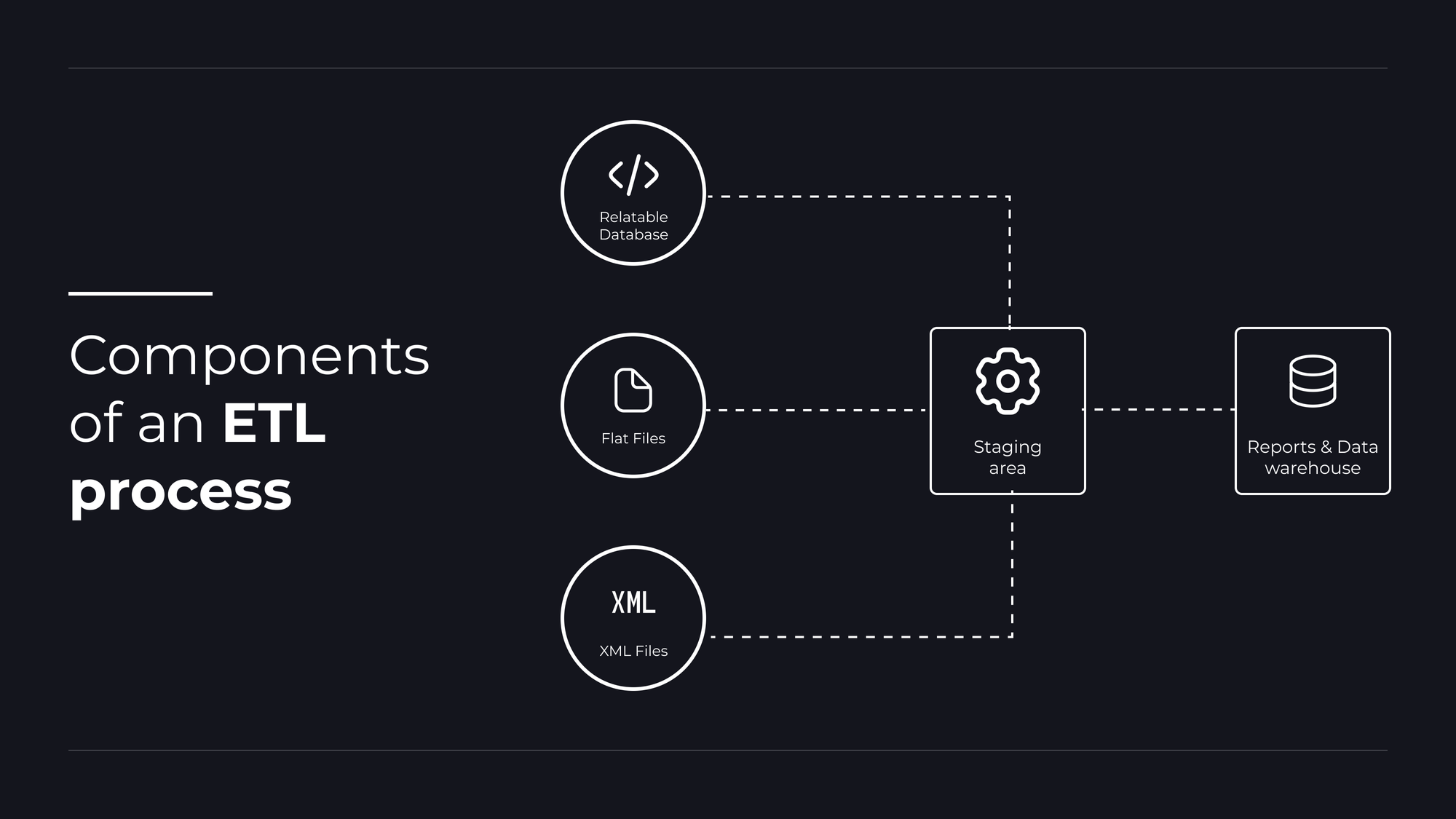A Complete Guide on ETL Software Testing

ETL (Extract, Transform, Load) processes are fundamental to modern data management. However, these processes are only as good as their outputs. ETL testing ensures that data remains accurate and reliable as it moves through each stage. This guide explores the essentials of ETL testing, its significance in today's data-driven business landscape, and practical approaches to implement it effectively.
What is ETL?
Before we dive into the nitty-gritty of testing, let’s break down what ETL means:
- Extract: This is where the magic begins. Data is pulled in from various sources, like databases, APIs, and flat files. Think of it as gathering ingredients for a recipe.
- Transform: Here, the extracted data gets a makeover. It’s cleaned, organized, and transformed into a format that’s ready for analysis. This could mean anything from fixing typos to aggregating numbers.
- Load: Finally, the polished data is loaded into a data warehouse or database, making it available for reporting and analysis—like serving a beautifully cooked dish at a dinner party!
Why ETL Testing Matters
So, why is ETL testing such a big deal? Here are a few key reasons:
1. Data Quality: Accurate data is crucial for informed decision-making. Effective test cases can help ensure data quality throughout the ETL process.
2. Performance Optimization: Effective testing helps spot bottlenecks and performance hiccups in the ETL process. This ensures that data is available when it’s needed, keeping everything running smoothly.
3. Compliance and Auditing: Many industries operate under strict data regulations. Proper ETL testing helps organizations stay compliant, avoiding potential legal troubles down the road.
4. Cost Efficiency: Early error detection saves money and maintains stakeholder trust. Understanding severity vs priority in defect management is key to efficient ETL testing.
Key ETL Testing Techniques
Now, let’s explore some essential techniques that help ensure data quality and process integrity during ETL testing:
1. Data Completeness Testing
This checks if all the expected data made it to the target system after the ETL process. Techniques include:
- Row Count Validation: Compare the number of rows in the source and target systems to make sure nothing was lost in translation.
- Data Sample Checks: Randomly pick records to ensure they exist in the target system.
2. Data Transformation Testing
Here, we validate that the data transformations are accurate:
- Rule Validation: Check if the transformation rules are delivering the results we expect.
- Data Type Validation: Make sure that the data types in the transformed data align with the target schema. No one likes a mismatched puzzle piece!
3. Data Integrity Testing
It’s crucial to maintain the relationships between data elements:
- Referential Integrity Checks: Ensure that foreign keys in the target system link to valid primary keys in the source. This keeps everything connected and coherent.
4. Performance Testing
Assessing how the ETL process performs under different conditions is vital:
- Load Testing: Simulate heavy data volumes to see how the ETL process holds up under stress.
- Response Time Measurement: Measure how long each phase of the ETL process takes to identify areas that could use a boost.
5. End-to-End Testing
This holistic approach checks the entire ETL pipeline from start to finish:
- Functional Testing: Verify that every part of the ETL process meets the specified requirements.
- Data Validation: Ensure the final output aligns with expectations based on the input data.

Best Practices for ETL Testing
To make your ETL testing efforts as effective as possible, here are some best practices to keep in mind:
1. Define Clear Requirements
Before you kick off testing, make sure everyone’s on the same page. Establish clear requirements and expectations to guide your efforts.
2. Automate Where Possible
Take advantage of automation tools to streamline repetitive tasks. Automation not only saves time but also enhances accuracy.
3. Implement Incremental Testing
Test the ETL process incrementally as data flows through it. This allows you to catch issues early on, making them easier to fix.
4. Utilize a Testing Framework
Develop a standardized testing framework that outlines procedures and guidelines. This consistency can improve efficiency and quality across the board.
5. Collaborate with Stakeholders
Engage with business users, data analysts, and other stakeholders throughout the testing process. Their insights can help ensure that the outputs meet real-world needs.
6. Document Testing Processes
Keep thorough documentation of your testing procedures, results, and any challenges you encounter. This will serve as a valuable reference for future testing cycles and for bringing new team members up to speed.
7. Conduct Regular Reviews
Set aside time for regular reviews of your ETL processes and testing strategies. This helps you adapt to changing business needs and continuously improve your approach.
Additional Considerations
1. Case Studies: Including real-world examples or case studies of organizations that successfully implemented ETL testing can provide practical insights and demonstrate the benefits.
2. Tools and Technologies: Consider mentioning popular ETL tools (like Talend, Informatica, or Apache NiFi) and testing frameworks (like Apache JMeter or Selenium) that can aid in ETL testing.
3. Future Trends: Discuss emerging trends in ETL testing, such as the rise of cloud-based ETL solutions and the integration of AI and machine learning to enhance testing processes.
Conclusion
As organizations continue to harness the power of data, the importance of robust ETL software testing cannot be overstated. By implementing comprehensive testing strategies, businesses can ensure data quality, enhance decision-making, and maintain compliance with regulations. In an era where data is king, investing in effective ETL testing is not just a good practice—it’s essential for success.
Need Expert Help?
If you're looking to implement or improve your ETL testing processes, F22 Labs is here to help. Our team of experienced professionals specializes in comprehensive ETL testing solutions, ensuring your data integration processes are efficient, accurate, and reliable.
We offer tailored services to meet your specific needs, from setting up testing frameworks to conducting thorough end-to-end tests. Don't let data quality issues hold your business back—reach out to F22 Labs today and take your ETL processes to the next level.
FAQ's
What is the ETL testing full form?
ETL testing full form is Extract, Transform, Load testing. It refers to the process of validating data as it moves through these three stages of data integration.
What are the main types of ETL testing?
The main types of ETL testing include data completeness testing, data transformation testing, data integrity testing, performance testing, and end-to-end testing.
Why is ETL testing important?
ETL testing is crucial for ensuring data quality, optimizing performance, maintaining regulatory compliance, and reducing costs associated with data errors in business intelligence and analytics processes.
